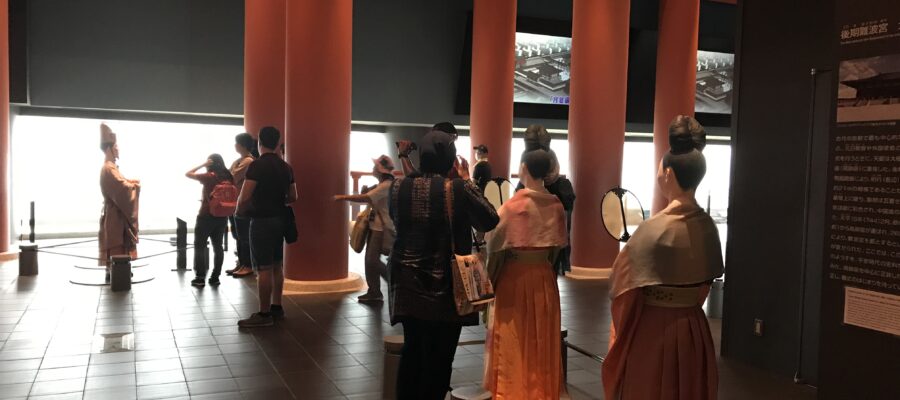難波の宮を再現した博物館
大阪城の大手門を出てそのまま西に向かうと、NHKのビルがあります。そのビルに隣接するのが大阪歴史博物館です。大阪城を案内した後、大阪の歴史を知ってもらうのに時々、海外からの研修生をお連れすることがあります。知名度がそれほど高くないので、日本人でも初見の方が多いと思いますが、古代から近代までの歴史を短時間で学ぶことができますので、ガイドの方には是非一度、訪問されることをお勧めします。
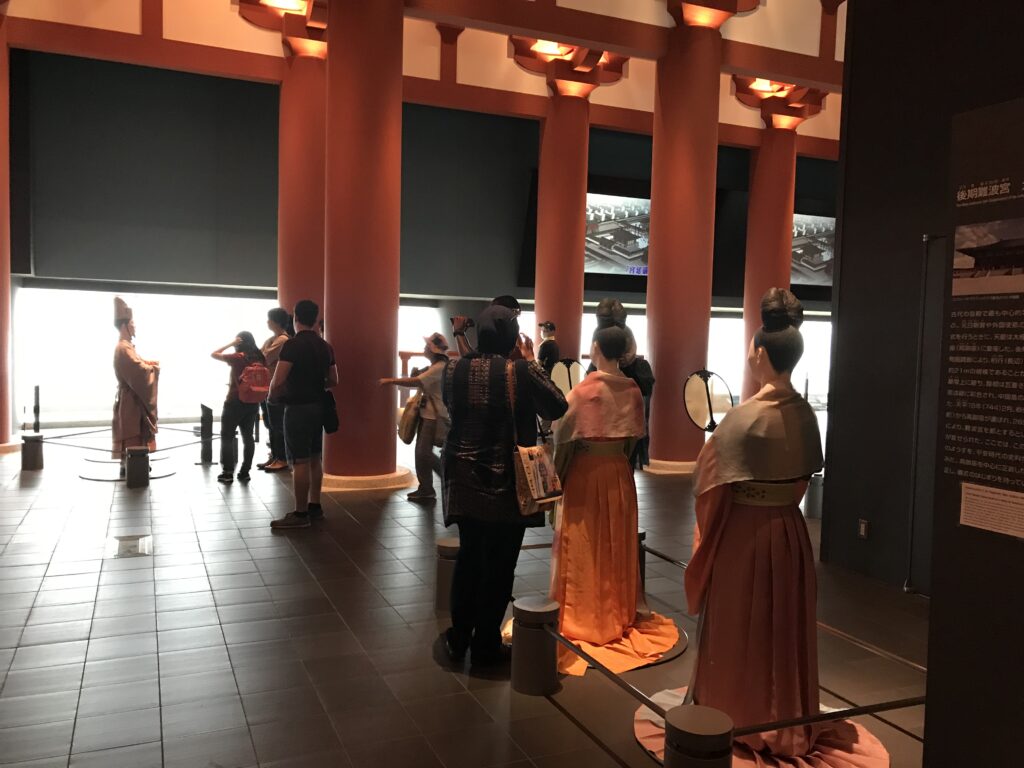
まず、エレベーターで10階まで一気に上がると、奈良時代の難波宮の大極殿の世界にタイムスリップします。大阪の人でも知らない人が多いのですが、短期間ですが、大阪に都が置かれたことがありました。645年の乙巳の変のあと、難波長柄豊碕宮が造営されたことを高校の日本史で習っているはずです。(皆さん、すっかり忘れていると思いますが。)また、奈良時代には、聖武天皇が平城京の副都として難波京を造営しています。
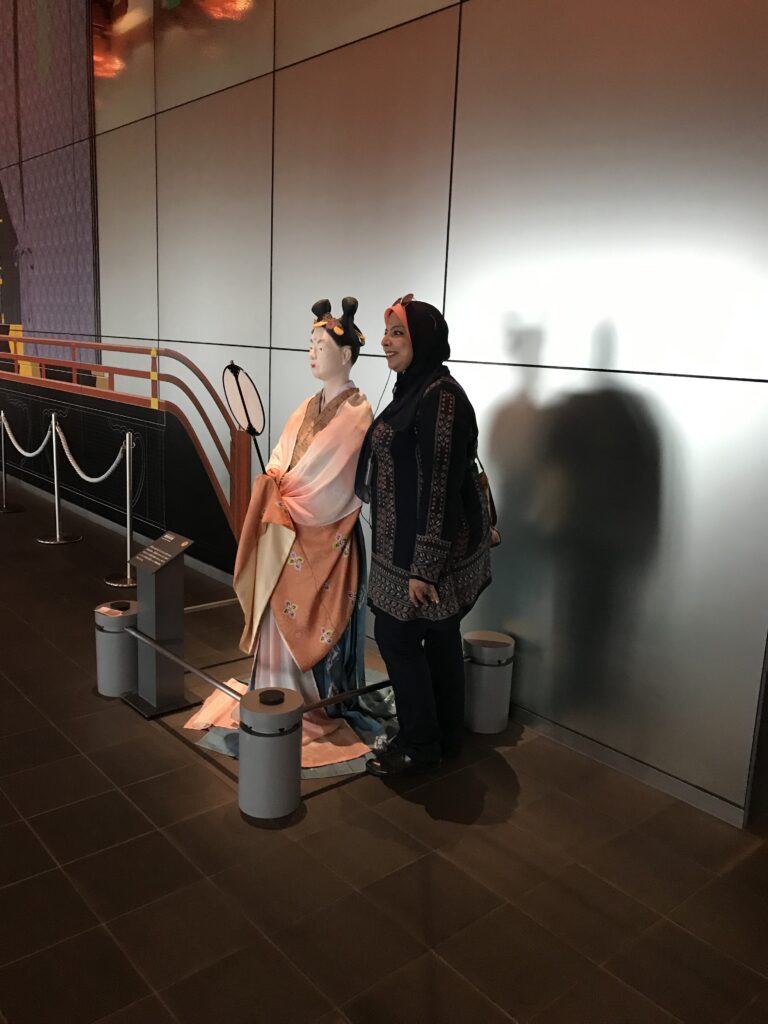
映像で見た難波の宮が眼下に現れる
館内では、奈良時代の衣装を着せた女官や官人たちの人形が並んでおり、訪日外国人の方が一緒に写真を撮影されています。また、難波の宮のことについて紹介した映像が終わると、スクリーンが上がって、大きなガラス窓から大阪の街が一望できる仕掛けです。
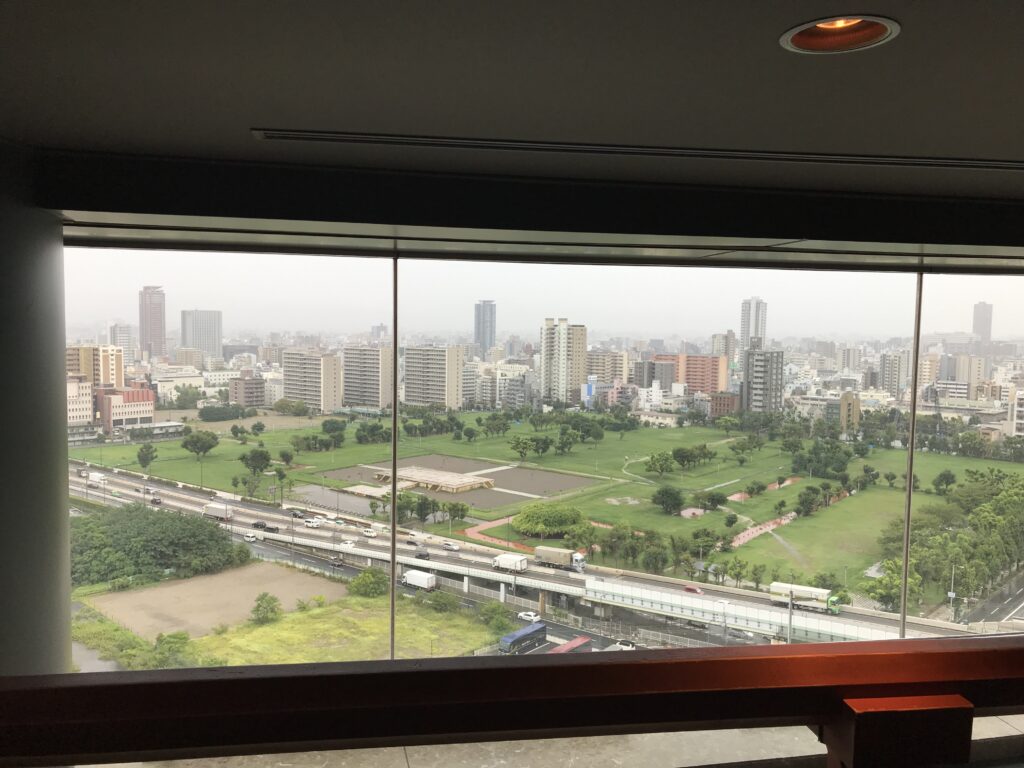
ガラス越しに下を見ると、先ほどまで映像で紹介されていた大極殿の跡地に復元された大極殿の基礎部分が目に入ります。毎回、演出としては良くできていると思います。
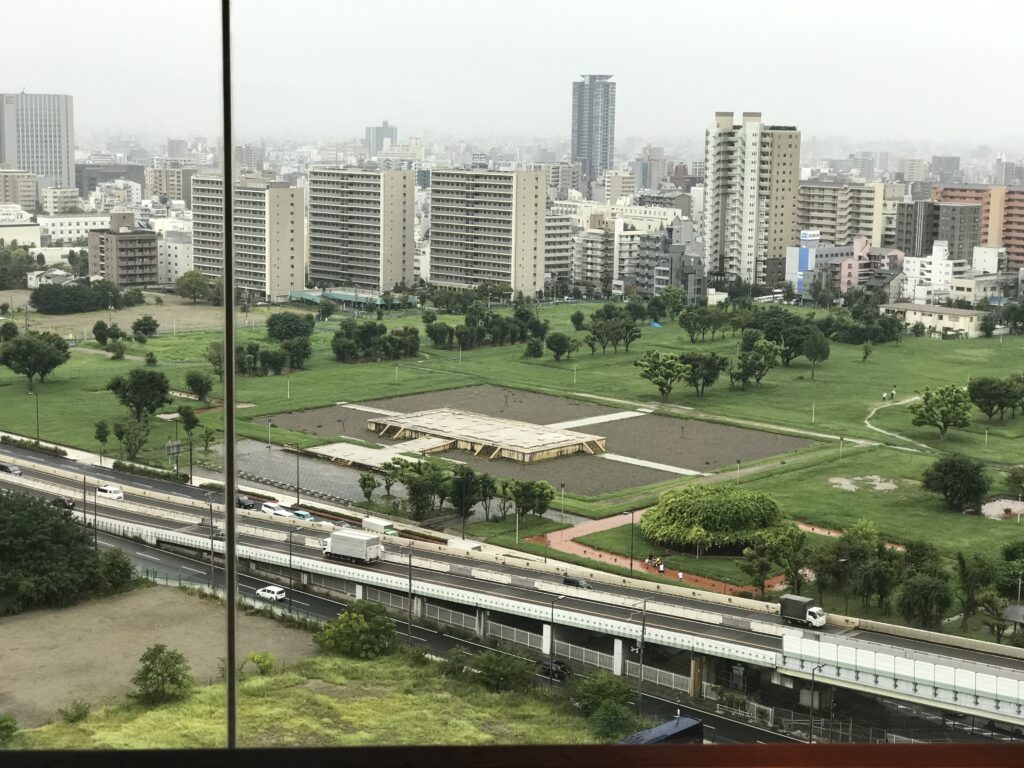
階段を下りると時代を下った展示に
階を下っていくと、戦国時代、江戸時代のゾーンを巡ることになります。最後は7階の大正末期から昭和初期の心斎橋筋、道頓堀などの街角を再現したエリアに到着します。ここで、歴史を見た後、道頓堀にお連れすれば、更にタイムスリップした大阪の南を実地で楽しんでいただくことになります。是非、大阪案内のコースに加えてみてください。(完)
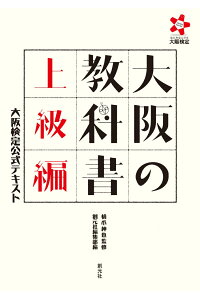
大阪の教科書 上級編 大阪検定公式テキスト [ 橋爪 紳也 ]
価格:2,090円
(2021/9/4 14:02時点)
感想(1件)
Osaka Museum of History
A museum that recreates the palace in Naniwa
If you exit the Ote-mon Gate of Osaka Castle and head directly west, you will find the NHK building. Adjacent to that building is the Osaka Museum of History. After guiding visitors around Osaka Castle, we sometimes take trainees from overseas to learn about Osaka’s history. Since the museum is not so well known, many Japanese have never seen it before, but it is a great place to learn about the history from ancient to modern times in a short time, so I highly recommend that guides visit there once.
First of all, when you take the elevator all the way up to the 10th floor, you are transported back in time to the world of the Daigoku-den Hall of the Naniwa Palace in the Nara period (710-794). Many people in Osaka do not know that the capital was once located in Osaka for a short period of time, and that after the Incident of Isshi in 645, the Naniwa Nagara Toyosaki-no-miya Palace was built, which you must have learned in your high school Japanese history class (I am sure you have forgotten all about it.). In the Nara period (710-794), Emperor Shomu built the Naniwa Capital as a sub-capital of the Heijo-kyo Capital.
The Namba Palace seen in the video appears below.
Inside the museum, dolls of courtesans and officials dressed in Nara-period costumes are lined up, and foreign visitors to Japan take pictures with them. Another device is that when the video introducing about Naniwa no Miya finishes, the screen goes up and a large glass window offers a panoramic view of the city of Osaka.
Looking down through the glass, visitors can see the foundation of Daigoku-den, which has been restored on the site of the Daigoku-den that was introduced in the video earlier. I think it is a well-done production every time.
Going down the stairs, you will see the exhibition down the ages.
Going downstairs, you will visit the zones of the Warring States Period and the Edo Period. Finally, you will arrive at the 7th floor, an area that recreates street scenes of Shinsaibashisuji, Dotonbori, and other areas from the late Taisho and early Showa periods. After seeing the history here, we will take you to Dotonbori, where you will be able to enjoy a time-slip to the south of Osaka in person. We hope you will add this tour to your Osaka guided tour course. (End)
Musée d’histoire d’Osaka
Un musée qui recrée le palais de Naniwa.
Si vous sortez de la porte Ote-mon du château d’Osaka et vous dirigez directement vers l’ouest, vous trouverez le bâtiment de la NHK. Le musée d’histoire d’Osaka se trouve à côté de ce bâtiment. Après avoir guidé les visiteurs autour du château d’Osaka, nous emmenons parfois des stagiaires de l’étranger pour leur faire découvrir l’histoire d’Osaka. Comme le musée n’est pas très connu, de nombreux Japonais ne l’ont jamais vu auparavant, mais c’est un endroit idéal pour apprendre l’histoire de l’Antiquité à l’époque moderne en peu de temps, et je recommande donc vivement aux guides de s’y rendre une fois.
Tout d’abord, lorsque vous prenez l’ascenseur jusqu’au 10e étage, vous êtes transporté dans le monde de la salle Daigoku-den du palais Naniwa à l’époque de Nara (710-794). Beaucoup d’habitants d’Osaka ne savent pas que la capitale était autrefois située à Osaka pendant une courte période, et qu’après l’incident d’Isshi en 645, le palais Naniwa Nagara Toyosaki-no-miya a été construit, ce que vous avez dû apprendre dans votre cours d’histoire du Japon au lycée (je suis sûr que vous avez tout oublié.). Pendant la période Nara (710-794), l’empereur Shomu a construit la capitale Naniwa en tant que sous-capitale de la capitale Heijo-kyo.
Le palais de Namba que l’on voit dans la vidéo apparaît ci-dessous.
À l’intérieur du musée, des poupées de courtisans et de fonctionnaires en costumes de la période Nara sont alignées, et les visiteurs étrangers au Japon prennent des photos avec elles. Autre dispositif : lorsque la vidéo présentant Naniwa no Miya se termine, l’écran se lève et une grande baie vitrée offre une vue panoramique de la ville d’Osaka.
En regardant à travers la vitre, les visiteurs peuvent voir les fondations du Daigoku-den, qui a été restauré sur le site du Daigoku-den présenté dans la vidéo. Je pense que c’est une production bien faite à chaque fois.
En descendant les escaliers, vous verrez l’exposition à travers les âges.
En descendant, vous visiterez les zones de la période des États combattants et de la période Edo. Enfin, vous arriverez au 7e étage, une zone qui recrée des scènes de rue de Shinsaibashisuji, Dotonbori et d’autres quartiers de la fin de la période Taisho et du début de la période Showa. Après avoir vu l’histoire ici, nous vous emmènerons à Dotonbori, où vous pourrez profiter d’un voyage dans le temps au sud d’Osaka en personne. Nous espérons que vous ajouterez cette visite à votre parcours de visites guidées d’Osaka. (Fin)
